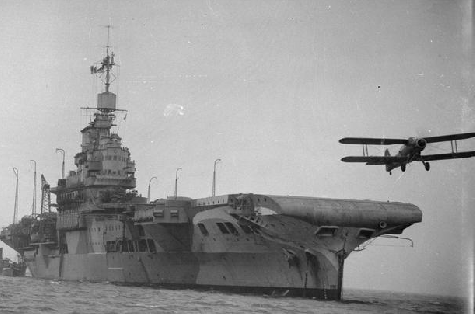The Arctic Convoy Club
of New Zealand

Veterans of the Arctic Convoys 1941 - 1945


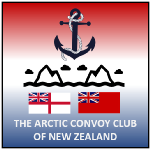
Away early next morning, jumping at every shadow, to start on the long, lonely trip up the Atlantic, well away from the normal shipping lanes. We had a few scares on the way, but eventually arrived at the Mersey Bar 0930 on 1 February 1940, down to our last shovelful of coal, and out of food, apart from any fish we could catch. Picked up the Pilot, and even more welcome, a crate of bread, and two bags of spuds. Over the bar and through the boom with out incident, and away up the ship canal to Manchester, where we paid off. The train trip back to Cardiff took seventeen hours, rather than the five it used to take. My first taste of a country at war. Arrived home to find my call up papers had arrived some time earlier, but my Mother had sent them back, so my first stop was the Recruiting Centre, where it was arranged that I would be sent to Bristol to join a draft of boys going to the Training ship HMS St George, on the Isle of Man - though I did not find out where we were going till we were on the Liverpool to Douglas ferry.
Arriving there, we ‘Marched’ to a small ex-holiday camp we came to know as the St. George Annex. There we were taught all sorts of useful things. How to fold your trousers inside out, with seven concertina creases, using your seamanship manual as a measuring stick. That only grocers used string, the navy used cord or line. That your left foot was the one you stepped off with, while swinging the right arm forward at the same time. But like all good things, it came to an end when we were deemed suitable to move to the main camp. Unfortunately, or so I thought at the time, I was confined to the sick bay three days before and spent six days there. The draft was split according to the three branches, Seaman, Telegraphers. and Bunting Tossers. The class list of 29 AC Seaman Boys were compiled alphabetically, but as I was late joining Collingwood 173 class, my name was on the bottom of the list to make up the 30 for a full class. This was to have a profound effect on my future. AC Boys did a year training, with emphasis on schoolwork; GC Boys only did nine months.
The year passed quickly, as it does when you are ‘enjoying’ yourself. With one black spot in March when I was given the news that my Father’s ship, a deep sea trawler, was missing with all hands, presumed sunk. Later confirmed. We passed out, and I was very pleased with my results. First in seamanship, and third in gunnery, which included square bashing. Next move, about 150 of us, complete with bags and hammocks, on our way, though we did not know it till we got there, to Guzz. We arrived there about midnight, black as the Earl of Hell’s riding boots on 24 February 1941. We were billeted, in, guess where, another ex-holiday camp, on the outskirts of Portsmouth; to wait for our postings. While we were waiting, we were often trucked in to Portsmouth to help with the clear up work after the air raids.
The drafts of boys were being sent out to various ships, and at the beginning of March, the first eighteen, in class order, of C173 class was drafted to commission Prince of Wales. Had I been in my correct place on the class list, I would have been one of them (and we all know what happened to the Prince on 10 December 1941). The ways of Fate are strange.
Jim Gallie : HMS Victorious : My Story
Out to starboard, about half a mile away was one of the screen destroyers, a tribal class, almost as big as a light cruiser, and we saw a giant wave lift it, so that it was balanced in the middle on top of it, Then the wave just dropped away, leaving the destroyer suspended by inertia in mid air, and we could see daylight under the whole length of of the hull. When it dropped, it created a huge fountain of water, and disappeared. It seemed like hours before she popped up like a cork, shook herself, and carried on. I might have thought I'd imagined it, if were not for the fact that at least eight others on the ADP had seen the spectacle, and as I found out over the phones, so had a lot of others who were at open air action stations, such as the Pompom, Bofors and 4.5 gunnery directors' crews.
Later, I learned that that the inclinometer on our bridge had registered a roll of 26° (our maximum tested tilt was 37°). What made it worse was that we were yawing as well as rolling, so that while I have the greatest respect for the small ship men, all was not feather beds and roses on the big boys.
Needless to say, we did not see any action on that run. The Germans weren’t as silly as us, so didn’t come out, but were content to sneak U-boats north.
The next convoy was to set the pattern for future convoys. While the threat of the German fleet kept the main British fleet tied up, guarding against a break out of the German big ships, it left the German aircraft, operating from airfields along the northern coast of Norway, and U-boats, working from Tromso and Altenfiord, who by now were hunting in packs of up to 20; free to savage the convoys. The smaller Royal Navy ships making up the close escorts did a magnificent job, but were fighting uneven odds. Whether the German High Command realised it or not, they were effectively neutralising most of the heavyweights of the Royal Navy in northern waters, without their own ships using a drop of fuel oil.
HMS Victorious on Russian Convoy duty in the Arctic. Albacore 4B of 817 Squadron overshoots, with his flaps and hook down, (just forward of the island), and revs up to, hopefully get back in the air. In this instance, he did, but they often finished up in the crash barriers. The starboard crane can be seen hoisting a previous casualty from the catwalk. Another, top left, is circling, waiting to land. Deck crashes and overshoots were quite common, particularly in rough weather.
Born in Cardiff, 21 August 1924, to a family whose background on both sides was of ships and the sea for at least three generations, it was perhaps inevitable that on my 15th birthday, 21 August 1939, I presented myself at the RN Recruiting Centre to offer them my services.
Over the next week, I completed the joining routine, including the laying on of hands by the doctor to see if I was still warm. Then I was told that I would probably have a wait of three months before being called up. Not being prepared to hang around doing nothing for that long, I took myself down to the shipping Pool at the docks to see if I could get myself a berth to fill in the time. This resulted in me, at 0600 on Saturday 2 September 1924 rejoicing in the title ‘Mess Boy’ leaving Cardiff on the SS Willowpool, 10,000 tons, top speed with a following wind about seven knots, with a full load of Welsh hard coal, bound for the River Plate.
The next day War was declared. We all made little bags to hold our goodies, and kept them handy, along with our cork life jackets, at all times. Once we got a bit further south into the warmer climes, most of us slept on deck. We eventually arrived at the Plate, and on up the river to Rosario. Discharged our coal, took on a load of wheat, and back down to Montevideo for bunkers. While we were at the detached mole, bunkering, a dirty great grey battleship came past us, bound for the inner harbour. A short while later we found out it was the German Battleship Graf Spee.
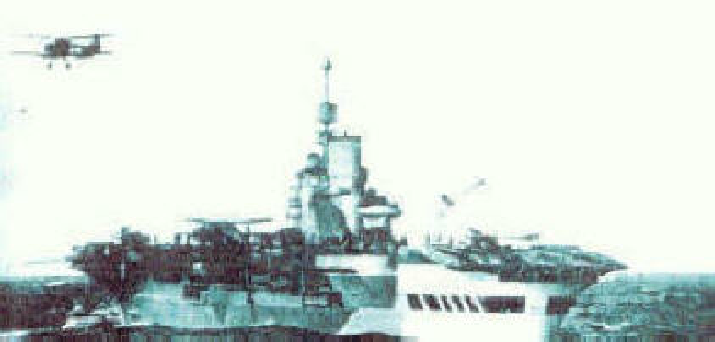
A week later, 29 March 1941 I was on my way, along with, among many others, 62 boys, to commission the new fleet carrier HMS Victorious in Newcastle. Of course at that time we did not know where we were, or what ship. Just that we were sitting in trains, starting and stopping, presumably still somewhere in Britain.
But we finally arrived, the whole trainload disembarked onto the station, in the dark , of course, were broken up in to batches, each batch being led away by one of the advance party carrying a torch, for a midnight walk to the ship.
And out of the nearly seven hundred men, only six were lost. Found out later two of them had not even left Portsmouth. Didn’t take us long to settle in, and be given our duties. The Gods must have been smiling me, because I was made the Commander’s Messenger.
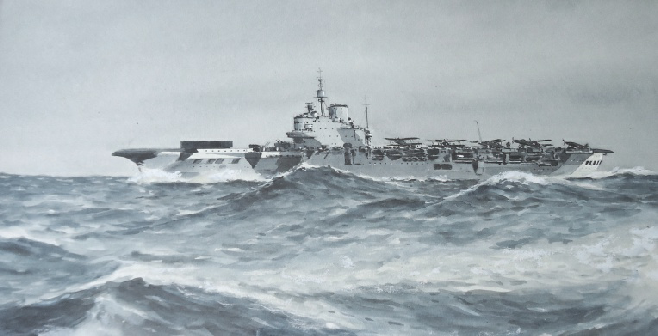
Our first job, after a minimal work up, was supposed to be to take a load of dismantled Hurricanes from Gourock for Malta. This was put on hold for the Bismark chase, which entailed a high speed dash from the Clyde, through a force 10+ gale to join the fleet from Scapa. Two of our escort destroyers had to turn back because of storm damage. After the Bismark; we went south to complete Op. Tracer. Assembled, and flew off 47 Hurricanes to Malta. Escorted by 4 Hudson Bombers, 43 got there. Back to Scapa, then up north, with HMS Furious, for raids on the Norwegian coast up as far as Tromso. These raids took a heavy toll on our antiquated Swordfish and Albercores. Took over Furious’ servicable aircraft. Furious returned to Scapa, while we went in to what was to become our northern home from home, Hvalfjord. From there, on my 17th birthday, 21 August 1941, started what was to become a regular routine, (apart from a couple of minor diversions like the Malta Convoy, where from my new action station in the ADP I watched the Eagle go down in seven minutes, with a loss of` 260 men. Also the North African Landings, where our aircraft and their crews were disguised as Americans to fool the Vichy French.
Operation Dervish. The first convoy of 7 ships to Archangel. As in all subsequent convoys, we were there, but not with them. Sixty or seventy miles back as a buffer between them and the German Big Guns. The Germans played that card well. Without firing a shot, or using a ton of fuel, they kept the Home fleet tied up for best part of two years. After Dervish, we covered the rear of seven PQ and six QP convoys including PQ17. During that one we were pulled back due the misinformation that the German Big Guns were coming out from Trondheim and Narvik. In terrible weather, and great confusion all round, we were chasing our tails while the convoy was mauled.
Early in January 1943 Victorious went on a reverse lease lend to the American Navy. During this time our flight deck was altered , and we took on the more modern American planes, Avengers, and Martletts. Did extensive exercises with their carriers, and several minor operations, culminating in Operation Cartwheel. Landings in New Georgia, the operation covering a front of nearly 300miles. November, on the way back home, via Pearl Harbour and San Diego, called in to Kingston, Jamaica to pick up about 300 DB Seamen, some of whom had been there for a year or more. Back in Liverpool’s Gladstone Drydock mid December till end of January 1944. Next two months were spent training with other carriers in use of Avengers, Martletts and Hellcats. Passing on what we had learned in the Pacific.
Then came Operation Tungsten, back up North, as escort for JW58 and RA58, and to pay a visit on our old friend Tirpitz in Kafjord. This time we were loaded for Bear, with the Furious, Emperor, Searcher, Pursuer, and Fencer. Between us we put up over 130 planes, a mix of fighters, bomber and torpedo bombers, with 14 direct, and 21 possibles or near misses, for the loss of 4 planes. This kept up about every 3 weeks till June, when we left the now more peaceful north to take the battle to the East as the British Pacific Fleet, where we played a very big part, largely due to the construction and strength of our aircraft carriers. I would recommend reading John Winton’s book ‘The Forgotten Fleet’ for an in depth account of this period. The fleet arrived back in Sydney, September, two weeks after my 21st birthday. I went in to hospital on the 12th, for an operation, nothing that couldn’t have waited till we got home, but the paper work had been done, so it could not be altered.
The Vic; my home for 4 1/2 years sailed for Britain, leaving me behind. On the 14th I was discharged to HMS Golden Hind, spent three pleasant months there, before being drafted to HMS Vengeance. We were engaged in transporting P.O.W.’s from Sumatra to Sydney, when someone in the regulating office decided that I had been away from home depot long enough to warrant repatriation to Britain. I was dropped of in Trincomalee, to await first ship going home. This proved to be the Illustrious. On that three week trip, I realised how quickly the Navy had reverted to the peacetime bull****. Arrived home, got three weeks leave, and being a Torpedoman, was sent to HMS Defiance, an old wooden hulk that was the torpedo school. Two days was enough, so I volunteered for submarine service, was accepted, transferred to another old hulk, HMS Dolphin, in Plymouth,, and having completed three months training, was drafted to HMS Thule for six months, then transferred to HMS Tabard. Our function was to take groups of National Service intakes out into the Channel every Tuesday morning and come back in Friday afternoon. This intake of Compulsory National Service upset the ratio of long service NCOs, so we were all given medicals, which a lot failed to pass. I was failed on Eyesight Below Required Standard and given the option of a discharge, or return to General service, with it’s Bull, Blanco, and Bluebell.
I made my choice, and picked up my Chalk Striped suit and Trilby hat November 6th 1948.
PQ14
Of the 24 ships in PQ14 which set out for Russia, only seven arrived. One was sunk by a U-boat, and 16 had to turn back because of the gales which were off the Beaufort scale. QP10, running with the weather, managed to get 12 ships back to Reykjavik, having lost two to submarines, and two to aircraft. We were rear cover along the coast, but we were bouncing about so much that it was impossible to fly off aircraft. At my action station as Gunnery Officers communication number, in the Air Defence Position, on top of the Island, 85ft above sea level, the swing, exaggerated as it was by the height, was such that we were moving through an arc of up to 100 feet. There were several instances when I didn’t think we would make it upright again.
This website is owned byThe Arctic Convoy Club of New Zealand © 2004 - 2024
This page updated August 2018

This site uses images in SVG file format.
For best viewing results, please ensure you are using the latest version of your web browser.
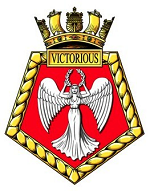
As his messenger, I kept no watches, but was required to attend him through a ten hour day, and at any action stations. In his determined efforts to learn every nook and cranny of the ship, I also learned my way around. He was a real old style seaman officer, and every day I would be given questions on seamanship or parts of ship, if I didn’t know, I had to find out by the next day. In the eight months I was his messenger, I got to know the ship like the palm of my hand, and learned a lot that was not in the seamanship manual. Also by keeping my eyes and ears open and my mouth shut, I was usually up to date with what was going on.
